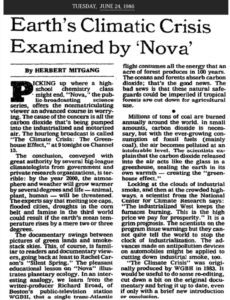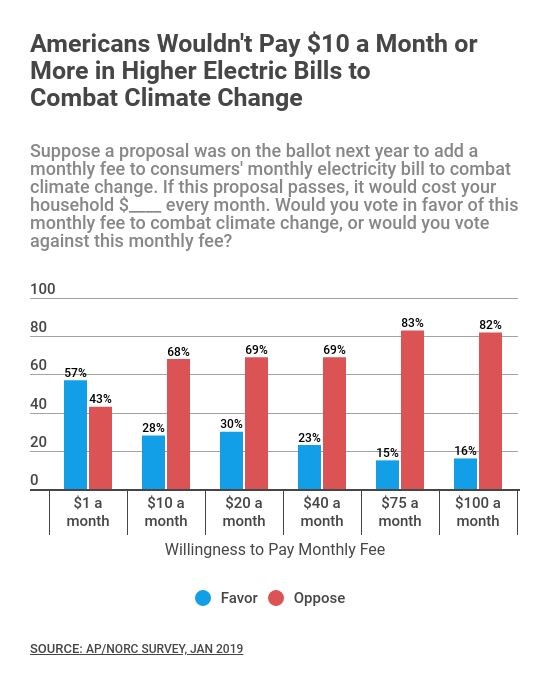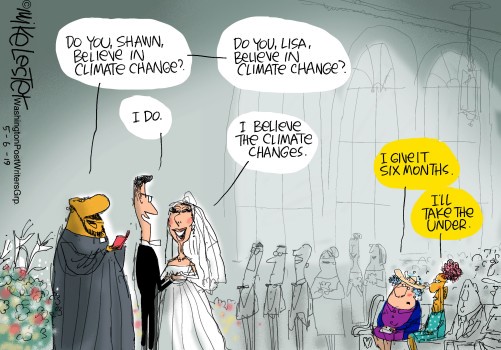
Climate change mitigation policies are firmly intertwined in hot political tribalism like school choice, abortion, taxes, and the minimum wage. I can think of few topics that are supported by both ends of the spectrum, although infrastructure spending and staying out of objectiveless wars seem to be two such things. We know things are at peak hostility when DC can’t even agree on infrastructure spending because somebody may get credit for it or allow a win for the other.
I like perspectives from outside our industry from sources that don’t wear their agenda on their sleeves. This post was triggered from an opinion piece in Industrial Heating, (exciting eh?) one of the many periodicals that come to my mailbox because of my title. In it, the piece, Do Something About Energy Before They Come for You, alludes to a relatively new (circa 2008) technology you probably haven’t seen.
Technology and Burgeoning Fossil Fuel Reserves
Scientists focused on volcanic discovery developed an orbiting gravimeter to see if they could study magma plumes. Cutting to the chase, within a concise few years, the technology was 1000 times more accurate. What they found was that the technology was excellent for mapping fossil fuel resources around the globe, from space.
Stepping back for a bit in the article, in the 1920s, it was believed there were 5-10 years of oil remaining. In the 1930s, despite considerably greater consumption, there were 5-10 years of reserves left. In the 1950s and 1960s, the reserves had increased to 10-20 years. My contribution: forty years ago, we were about to run out of natural gas, and Three-Mile Island occurred. The result was a coal-fired electricity generating buildout. In the late 1970s for a couple of years, buildings were built to heat with electric resistance using coal-fired electricity.
You get the drift. The end is always near. However, now we have what is essentially limitless fossil fuel reserves – like 500 years’ worth, and the land with some of the richest reserves falls within the borders of the United States.
The reason for predicted 10-20-year depletion of fossil fuels for the better part of a century is simple: people think in stagnant terms and at the same time, are lousy at predicting the future. They do not consider the pursuit of excellence and discovery. This cannot be done. Predicting the future is futile because no one can account for millions of people pursuing breakthroughs, whether intentional or by accident. Like the fossil-fuel-mapping technology, other accidental discoveries include microwave ovens, the Slinky, Playdoh, super glue, Post-It notes, and the pacemaker.

Carbon Market Growth Regions
Of course, emerging markets of the most populated region in the world, Eastern and Southern Asia are driving up demand for fossil fuels. The Industrial Heating author writes that coal-fired capacity for electricity generation grew 900 GW in the last 20 years and is predicted to grow by “only” 400 GW[1] in the next twenty years.
Now, some believe we have twelve years to do something (I don’t know what) about climate change, or we are in an irreparable spiral. I would caution, or maybe assuage is a better term, these folks that there is a lot of truth to predictions for X to always be 10-20 years away. See the article from the New York Times, circa 1986 below. By 2000 (remember Y2K?), the earth would warm by “several degrees and life – animal, plant, human – will be threatened. The experts say melting ice caps, flooded cities, droughts in the corn belt and famine in the third world could [my emphasis] result if the earth’s mean temperature rises by a mere two or three degrees.”
Thirty-three years later, what happened?
People Say and Vote Two Very Different Things
Zillions of polls tell us people favor emission reductions, but why not ask if they support cute puppies? What is the cost, and what are you willing to pay, emission-cutting amorist? The answer to this question for most people is, almost nothing, or less than $10 a month – per an AP-NORC pole.
These data jibe with election results around the world, including the most recent shocker, Australian Liberal National Party leader, Scott Morrison, beat Labor’s Bill Shorten in an upset no one forecast. Shorten put climate policy and higher taxes front and center while Morrison ran on economic growth, mining, and exports, especially coal and iron ore exports to China.


Meanwhile, in North America, climate policies are falling and failing to pass in places like Alberta, Ontario, Minnesota, and Washington (x2). This headline, Hardly anyone supported Doug Ford’s decision to scrap cap and trade in Ontario, commissioner says, defines cognitive dissonance. Ford ran on ending the carbon tax and cap and trade. Sadly, in some of these districts, energy efficiency was taken down with decarbonization policy.
Politics swing left and right over the years, but one thing appears to be constant. Despite what polling may say, the bourgeoisie is not willing to pay diddly to decarbonize. We must figure out a way around this.
[1] Warning: predictions are historically horrible.
